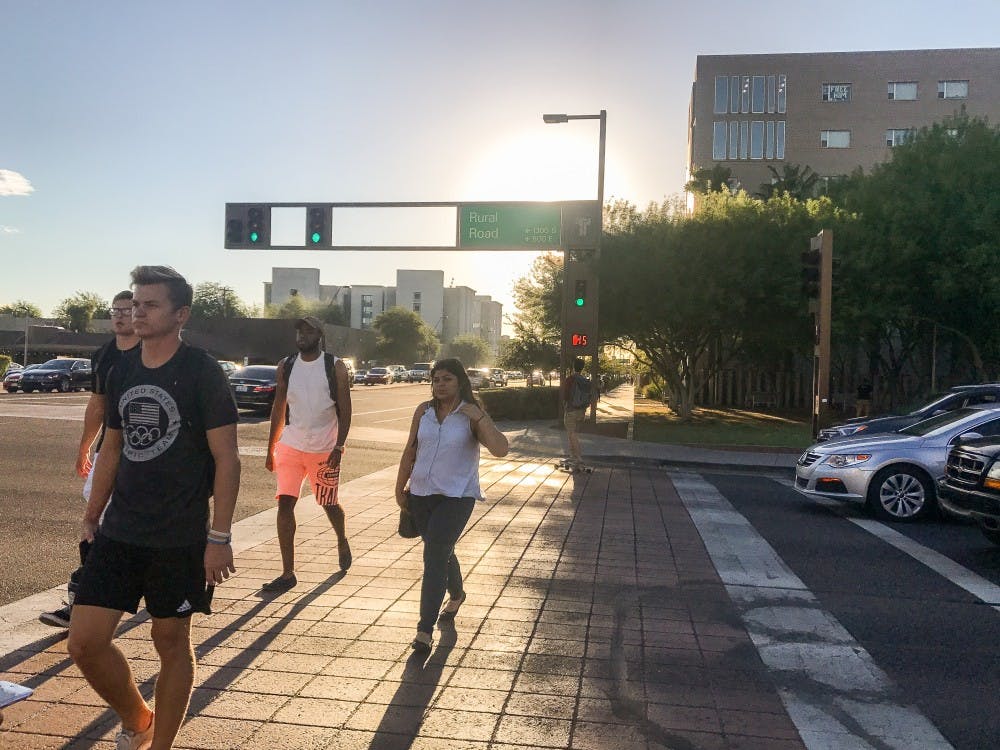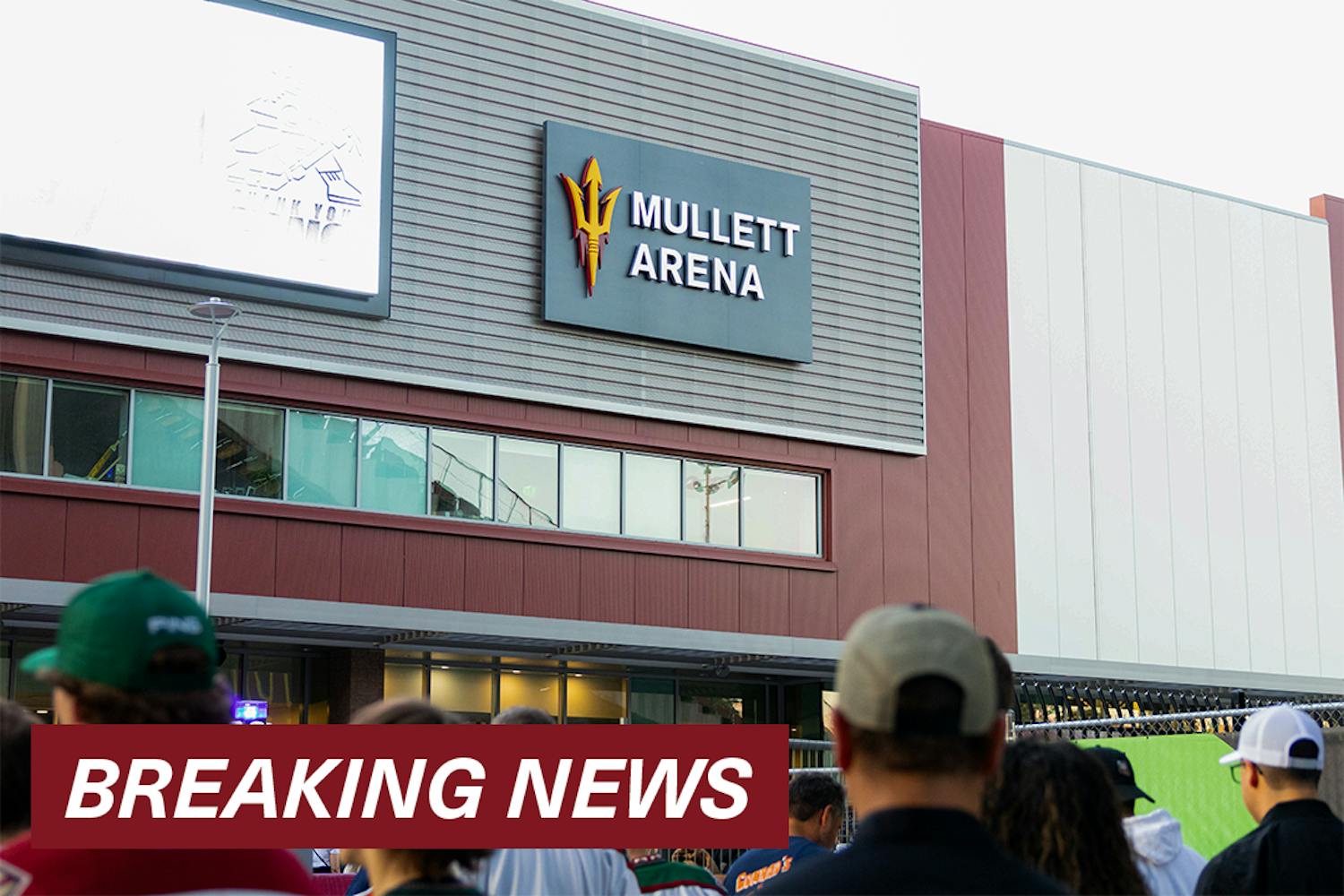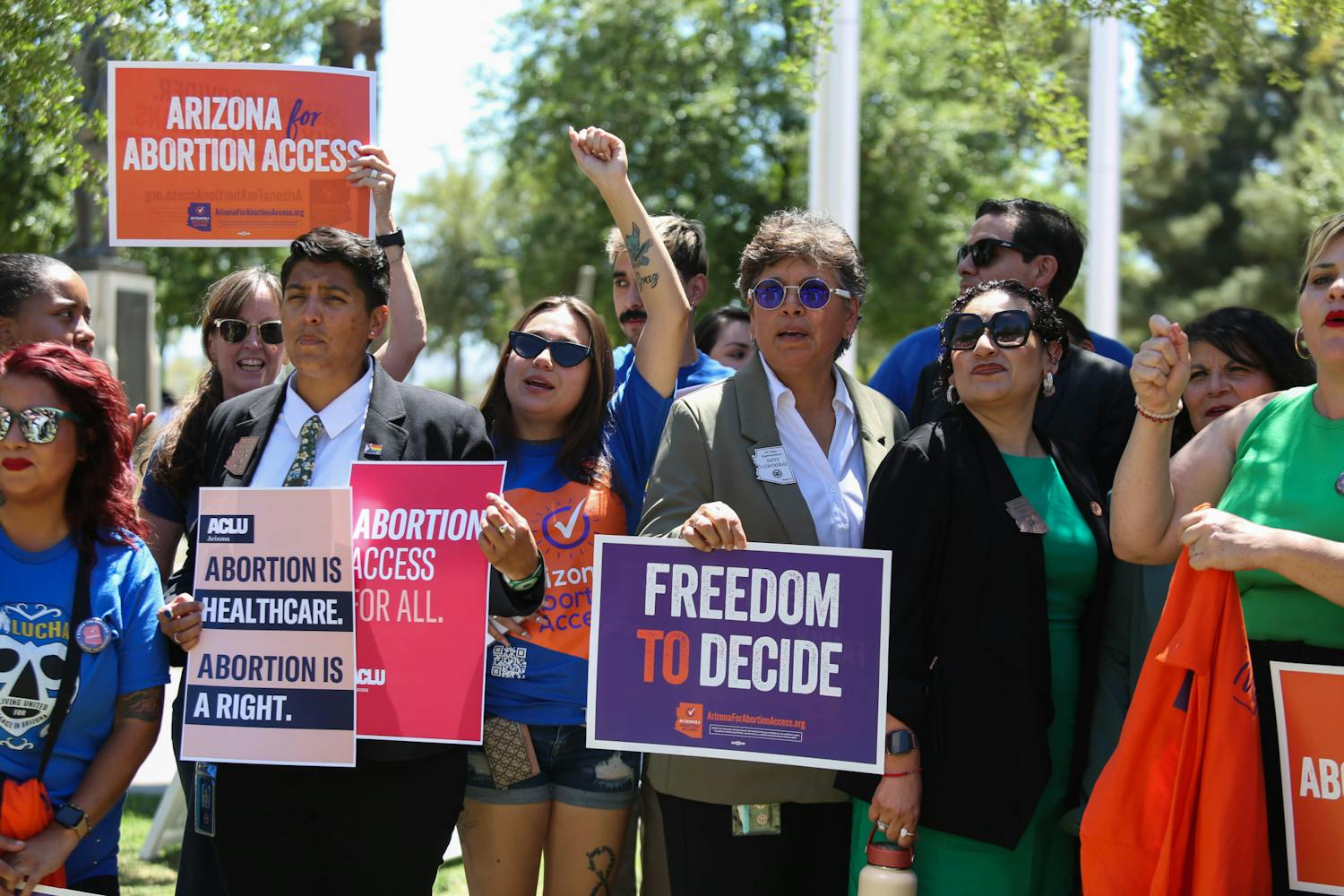A highline walkway, a new Rural Road bridge and a monorail system running over campus are just three of the 11 ideas proposed at the Tempe Transportation Commission meeting on Sept. 12. The proposals aim to decrease traffic flow and congestion in downtown Tempe.
The city is partnering with Arizona State University on six of those ideas.
Downtown Tempe and ASU's Tempe campus see 50,000 vehicles sweeping through their streets a day, on top of heavy pedestrian and cyclist traffic. ASU and city staff have been working on several large projects to calm traffic for civilian convenience, and more importantly, increase safety.
Tempe lakefront development is adding pressure on the existing system and off-campus student housing is changing pedestrian needs. Transportation Commission officials said changes in the existing systems are necessary because increased density will “create conflict, inconvenience and pressure on the transportation system.”
ASU and Tempe partnered to commission a study to better understand the changes to Tempe and how to work toward solutions for the increased density to the downtown area.
One proposal at the commission meeting was to close off traffic on University Drive near campus. Shelly Seyler, the city's deputy public works director for public transportation, said doing so would greatly improve conditions for the students, pedestrians and cyclists who dominate the area.
Proposals like closing University Drive would especially benefit those who move throughout campus outside of their car.
ASU alumni Isaiah Adkins rides his bike several times a day through downtown Tempe doing bike delivery for Jimmy John’s. Adkins said he feels unsafe riding his bike on any streets near the university’s campus.
“It’s bad," Adkins said. "People, walk, turn and step wherever. I ride pretty fast, I don’t want to mess anybody up."
Among the other ideas proposed was an above-ground pedestrian walkway. This solution has been implemented in other large metropolitan areas such as New York City, and proved to be successful in protecting pedestrians. The pedestrian separation walkway would increase pedestrian and bicycle safety, while also increasing vehicle capacity at intersections.
“We are looking at these big ideas to see which ones rise to the occasion and which ones need to be put on the backburner,” Seyler said.
The ideas and development plans have already been approved by the city, though not all will be used. Some of the regional ideas include a rail line running over University Drive and Rural Road, which would serve as a form of above-ground transportation.
“The more forms of transportation you have coming in that aren’t vehicles definitely helps,” said Drew Nibeck, a junior engineering major who usually gets around campus by foot.
Other proposals include widening the Rural Road bridge above Tempe Town Lake, adding eastbound ramps to Loop 202 and McClintock Drive, which would decrease traffic by 10 to 20 percent, or adding Park and Ride lots into the downtown area.
The regional ideas tend to be larger scale and harder to carry out, which is why Tempe partnered with ASU to seek simple solutions to traffic and safety problems.
A few of these ideas include adding medians to University Drive, improving intersections at Rural Road and Rio Salado Parkway, as well as widening Rio Salado Parkway.
Officials predict it could be up to a year and a half before any of these ideas are executed because of the research, planning and public outreach that needs to be done. They said it's important for the community to be involved in the feedback and planning.
Reach the reporter at madeline.r.johnson@asu.edu or follow @madelineroseej on Twitter.
Like The State Press on Facebook and follow @statepress on Twitter.




